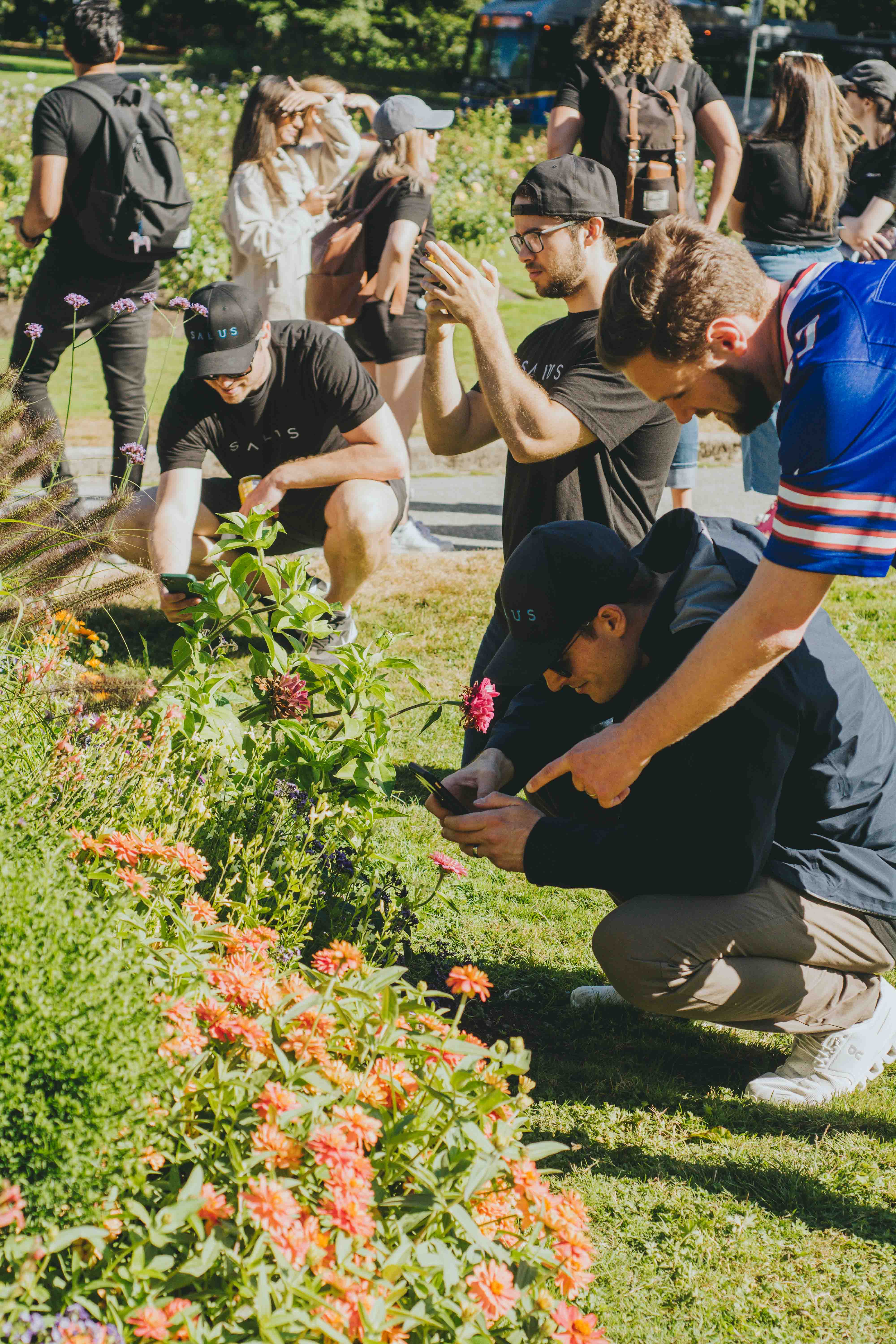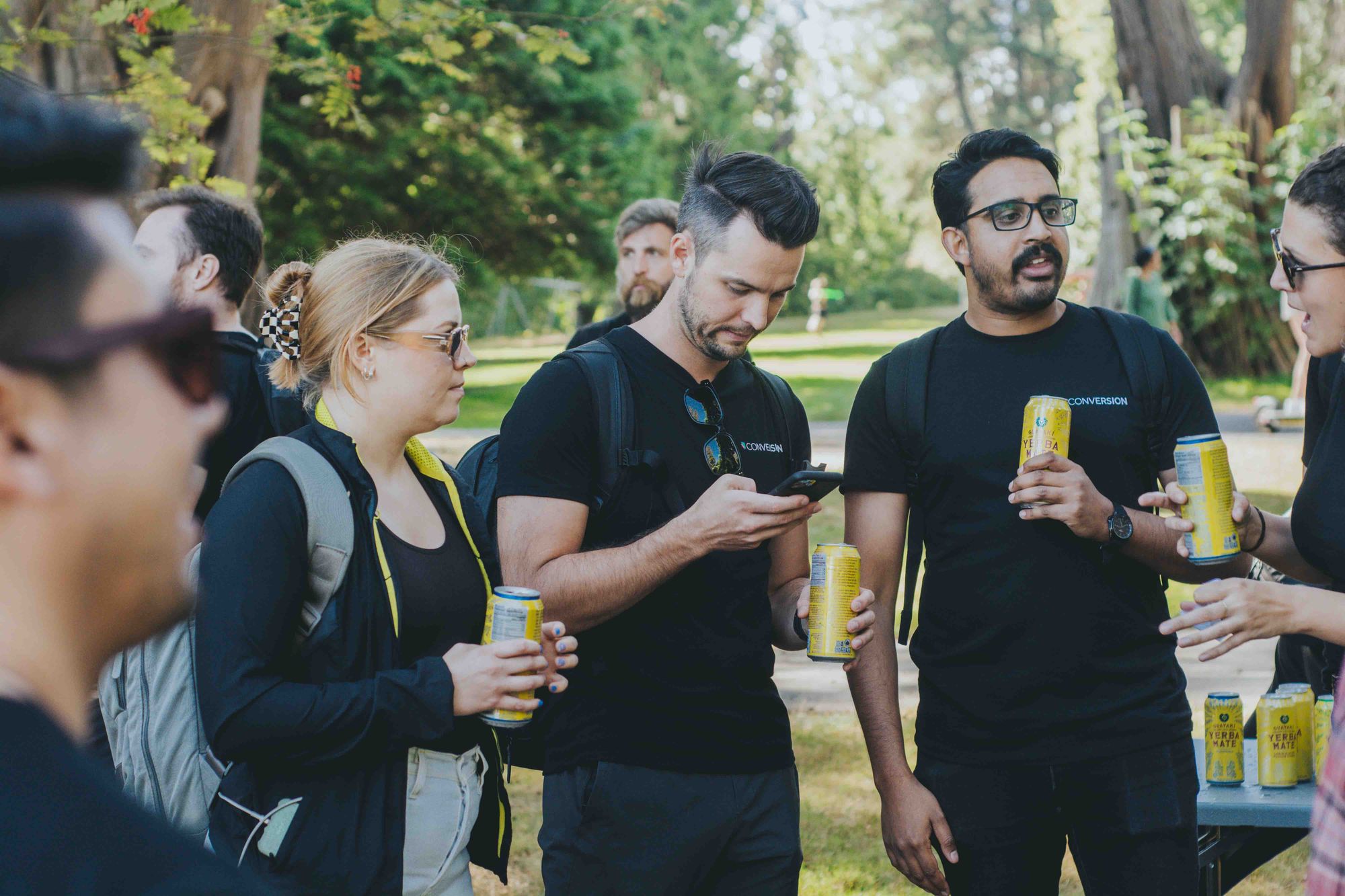If I asked you what a citizen scientist was, could you tell me? (without googling 🕵️♀️) I’m sure you can deduce from what you know about the two words in question. Citizen being someone of the local population and in this context likely not studied in science. And scientist being someone who conducts research. Well you’re on the right track! Citizen Scientists are average everyday people who help a larger community of scientists, researchers, and enthusiasts with projects through observation and recording of the world around them.

What did we do?
We got to dive into this world of citizen science with Natasha Beauregard who teaches people how to do this on a daily basis. We had SALUS and Conversion join us as we learned how to contribute to science in practical ways. Utilizing an app called iNaturalist, Natasha taught us how to take photos, record videos, and identify sounds all while logging it into the app.

We split into two groups after a quick tutorial on the app. Natasha took the first group to the Stanley Park Lagoon to look for birds and specific species. The second group headed to the rose garden at Stanley Park to practice using the app and identifying insects.
While phones are often viewed as making us more disconnected from the world around us, apps like iNaturalist help us use technology to become less disconnected. Attendees explored the Stanley Park Rose Garden and pointed their phones at unique plants they came across, giving them access to plant/animal names, habitat ranges, and more. It was a deeply connective experience that made us all feel just a bit closer to the natural world.
The other group took some time to explore the Lost Lagoon. This gave them the opportunity to discover not only aquatic vegetation, but also to observe and photograph the animals that call the lagoon their home. And all in the name of science. How cool is that?

Why are Citizen Scientists Important?
Citizen scientists are an integral part of large scale research and understanding of the worlds ecosystems. Research is expensive and takes a lot of time and people power. To study the growth of certain species populations can take years and lots of time spent in one place to monitor the population and trends in a specific area. Take a park as large as Stanley Park, many native species grow from plants, insects, and animals. There are also many invasive species which we have worked with before. These invasive species have a huge effect on the native ecosystem and can take over a forest or ecosystem in just a few years if not monitored properly.
“I had no idea Citizen Science was even a thing!” - Caitlin Liboiron, Salus
Now imagine a much larger scale national park. It would be near impossible to track every growing species native or invasive. This is where citizen scientists come in. Many hikers or biology enthusiasts are already in these parks and observing the growing vegetation and animal populations. With a quick snap of a phone camera one can upload date right to a place where studied scientists and researchers can better understand the local forests growth. This comes in handy to identify what actions may need to be taken to ensure the ecosystem is thriving at its best.

Yerba Mate, Anyone?
We had Guayaki join us for this Purpose Day as a sponsor. They are excited about local volunteering and do a lot of work as a company to restore forests and educate about the traditions of Yerba Mate. We got to enjoy their refreshing Yerba Mate tea beverages at our break before the groups switched places.
Takeaways
This was a unique Purpose Day for us— a way to volunteer time and resources that most people wouldn’t naturally think of. The members who attended were excited to learn they could help with science and research in ways they never thought they could. Perrin Swanson from SALUS stated “Helping with research is fun and easy!” Noting how we all felt as this event came to a close. Who knew we could all help with research as Citizen Scientists 🤯
Is citizen science something you could see yourself doing?

